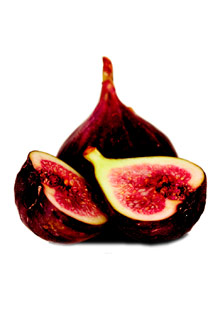Tastes Great, Needs More Vodka!

Photo: Kate Lacey
The four-ingredient dinner: It heats up friendships, makes for lively collaboration, and tastes out-of-this-world delicious.
Name your favorite four ingredients and we'll build a meal around them." My husband, Ian, proposed this challenge a year ago to our friend Kimberly. I was dubious. Ian was pretty good in the kitchen, but he was no Iron Chef, and I grew up in Oklahoma thinking basic ingredients were Lipton onion soup mix, Fritos, cream of mushroom soup, and Bisquick. I still have recipes in my file that call for Dr. Pepper or root beer in things like brisket and cake, but thanks to the great restaurants of New York, Los Angeles, and beyond (famous and hole-in-the-wall ethnic), I now know that the best recipes don't have surprise in their name and that green beans exist outside of a casserole.Until recently, the only thing I felt completely confident cooking for company was chocolate chip cookies. But after Ian's delicious evening (Kimberly chose pear, Brie, chocolate, and her grandmother's apple pie), the "four-ingredient meal" has become my preferred mode of entertaining. Including guests in the menu planning has not only deepened our friendships—a discussion of the chosen flavors usually leads to great stories about family, childhood, holidays, or travel—it's also enabled us to expand our social circle along with our cooking abilities. Here's how it works:
Step One. You need to be comfortable bragging, as Ian is. I can now pretty much count on Ian to offer up a four-ingredient meal to any of our friends, friends of friends, colleagues, and people we barely know who happen to mention a fondness for food. This, by the way, always sends me into a panic, even though the handful of four-ingredient meals we've done so far have been much tastier than I ever could have imagined.
As it turns out, for me anyhow, panic is Step Two. Panic leads to creativity. This is true in everything I do, from writing to cooking. In my experience, lack of panic means lack of caring. If panic is present, you will find yourself up late at night Googling various combinations of the requested ingredients, like "rhubarb and balsamic vinegar," to find inspiration and direction. You will read the indexes of cookbooks (I love The New Best Recipe, by the editors of Cook's Illustrated magazine) to see which dishes call for figs or pistachios. You will visit stores that sell only spices (or penzeys.com), or your new favorite gourmet shop, where you will debate the merits of various forms of your ingredients, like truffle paste, truffle carpaccio, and truffle oil. You will ask the produce people which pears are best this time of year, and they will have helpful and well-reasoned answers. You will fall in love with your local farmers' market, where you will discuss heirloom tomatoes with the folks who grew them. Somehow this new language, food, allows you to engage in long, passionate, mouthwatering conversations with anybody, anywhere, anytime.
Step Three is menu planning. As I said, we are not Iron Chefs. We need more than an hour to plan (not to mention shop for) a meal, especially if someone decides the duck needs to be bought in Chinatown. Or if that same someone further complicates the challenge by promising to use the ingredients "in a surprising way." For example, Kimberly's grandmother's apple pie became an apple martini with graham cracker rim. (Ian considers a cocktail a first course.) The chocolate showed up in a Mexican mole sauce for chicken. The Brie was baked and served with sliced pears as an appetizer, which now seems altogether too obvious, but we needed one ace in the hole. And dessert was a homemade pear sorbet, which we made with store-bought pear juice in an ice cream maker that had been gathering frost in our freezer.



